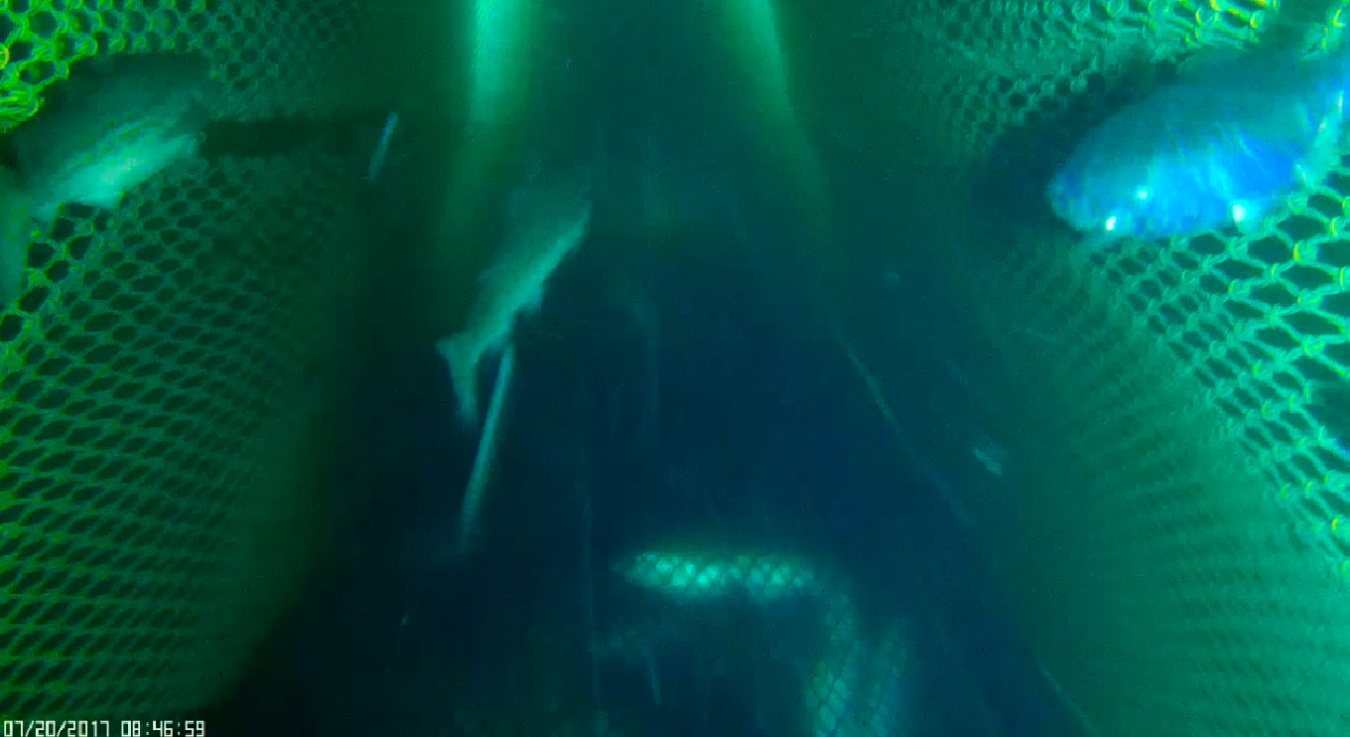Marine and hydrokinetic (MHK) energy taps into the movement of waves, tides, and water currents to turn a turbine and produce electricity.
January 8, 2018
A view from inside a trawl net in Alaska, where researchers are using video to monitor bycatch. The camera was developed by Williamson & Associates in Seattle, WA. Video footage like this can be paired with PNNL’s EyeSea algorithm.
Marine and hydrokinetic (MHK) energy taps into the movement of waves, tides, and water currents to turn a turbine and produce electricity. Uncertainty around the environmental impacts of marine energy devices leads to long permitting processes and extensive monitoring requirements, so researchers at Pacific Northwest National Laboratory (PNNL) are developing new technologies to measure and evaluate environmental performance. Improved environmental impact data can help regulators improve permitting processes and requirements while simultaneously lowering development costs.
Funded by DOE’s Water Power Technologies Office, PNNL scientists and engineers created a software tool—EyeSea—that automates the analysis of underwater video footage. EyeSea uses machine vision algorithms to “watch” video footage for any incidents where a fish or mammal is near an MHK turbine. The tool automatically detects when a fish or mammal enters the frame and flags every event. The flagged events tell an operator which segments of footage should be evaluated, significantly reducing labor time.
A common method for observing how fish and mammals interact with MHK systems is to simply set up an underwater camera. One hour of video recording, however, can take five or more hours to assess manually, and it’s not uncommon for there to be hundreds of hours of footage to review. To mitigate the problem, operators and researchers often resort to sub-sampling, picking random one-hour intervals of footage to evaluate. While such an approach speeds up an analysis, it reduces accuracy.
PNNL recently developed and tested the tool using footage from a pilot project of an MHK unit in Igiugig, Alaska. For about two months, an Ocean Renewable Power Company (link) turbine generated electricity during the middle of Alaska’s annual salmon run. Using data from the pilot project, PNNL staff developed EyeSea to analyze the underwater footage, detecting when fish were around the turbine.
Researchers analyzed 43 hours of video footage, where they observed nearly 20 fish interactions with no occasions of fish injuries. PNNL assessed the accuracy of EyeSea and determined it was 85% accurate at detecting when marine life was present. From this data, PNNL is refining the algorithms behind EyeSea. If successful, EyeSea will be made available to MHK operators and developers to streamline siting and permitting processes, and meet post-installation monitoring requirements at future MHK sites.
Based on prior analysis of MHK resources, more than 10% of Pacific states’ electricity demand, for example, could be satisfied by developing a fraction of the wave energy available off the West coast. Developing just 1/6th of the available wave energy in the five Pacific states could power more than 5 million homes and support roughly 33,000 jobs.
The U.S. Department of Energy's Water Power Technologies Office (WPTO) is advancing cutting-edge technology to modernize the U.S. hydropower fleet and drive U.S. leadership in new ocean and river energy, with the goal of delivering low-cost power and resiliency to the nation’s power grids. Subscribe to WPTO’s Breaking News email for important updates.

